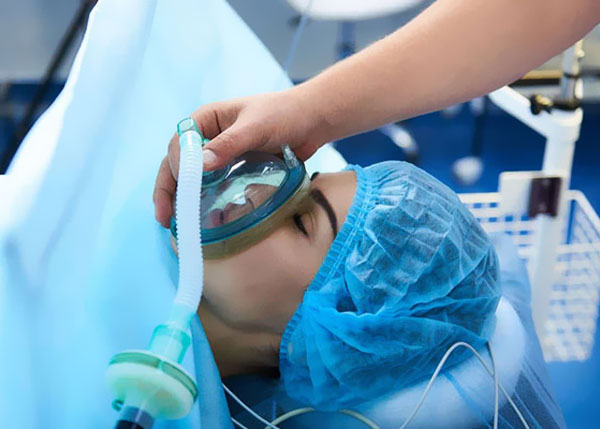Anesthesia & Reanimation

Throughout history, physical pain has played an essential role in the struggle for life. Humanity has made various attempts to eliminate pain. Until 1842, all surgery was a painful and difficult process for both patients and doctors. From that date, anesthesia was accepted as a branch of science and has made great progress to this day. Modern-day administration of anesthesia is performed by anesthesiology and reanimation specialists who are experts in their field, with the help of advanced technology.
When a surgeon decides to perform a surgery, the patient often fears anesthesia, or the sedation, rather than the surgery. Anesthesia is the process of making part or all of the body insensitive to pain. When a patient decides to undergo surgery, anesthesia also means not having control over their body, whether they are conscious or unconscious. During this process, the anesthesiologist's knowledge, experience, and skills are of utmost significance. Anesthesiologists specialize in emergency care, intensive care, and pain management. An anesthesiologist acts as an all-around healthcare provider for the patient, including continuous supervision and monitoring of vital functions such as breathing and blood circulation before, during, and after the procedure.
While there are many theoretical complications to anesthesia, in practice, it is considered much safer to be anesthetized by a skilled and knowledgeable anesthesia team in a well-equipped hospital compared to, for example, driving in heavy traffic.
Anesthesiologists are the most critical member of the operating room team, even the unsung heroes. The drugs used to keep patients from feeling pain during surgery are determined and administered by anesthesiologists, who are specialists in anesthesiology. Minimizing the negative effects of anesthesia on the human body and ensuring that patients wake up after the procedure with their vital functions intact are also among the most significant responsibilities of an anesthesiologist.
The temporary loss of consciousness and reduced reflex function without any change in vital functions is called general anesthesia. General anesthesia prevents the patient's awareness of what is happening during surgery by inducing loss of consciousness, ensures the patient's comfort during surgery by eliminating pain, and facilitates the surgical procedure by inhibiting reflex function and ensuring muscle relaxation. Because of these effects, the purpose of general anesthesia is to provide the right conditions for surgery. However, it is also the anesthesiologist's responsibility to maintain the patient's health and safety during surgery.
Anesthesia can be administered by doctors trained as anesthesiologists and resuscitators. Anesthesia technicians, who are trained to assist anesthesiologists during surgery, are also a very important part of the anesthesia team.
Patients are usually given oral medications, referred to as "premedication," to help them feel comfortable during surgery. When a patient is taken to the operating room, vascular access is first made available. The patient is then monitored to check vital functions such as heart, breathing, and blood pressure. Once these preparations are complete, a special general anesthetic is administered through a vein to the patient with the anesthesiologist's approval. A special tube is inserted into the trachea to ensure uninterrupted and safe breathing. With the anesthesiologist's permission, the procedure can begin once a safe depth of anesthesia is reached. Inhaled and intravenous medications are given together or separately to ensure the continuity of anesthesia. At the end of the procedure, the anesthetic used is stopped and the patient is awakened and moved to the recovery room under the supervision of an anesthesiologist. To warm the patient, relieve pain, take precautions against nausea and vomiting, and send the patient home in comfort.
